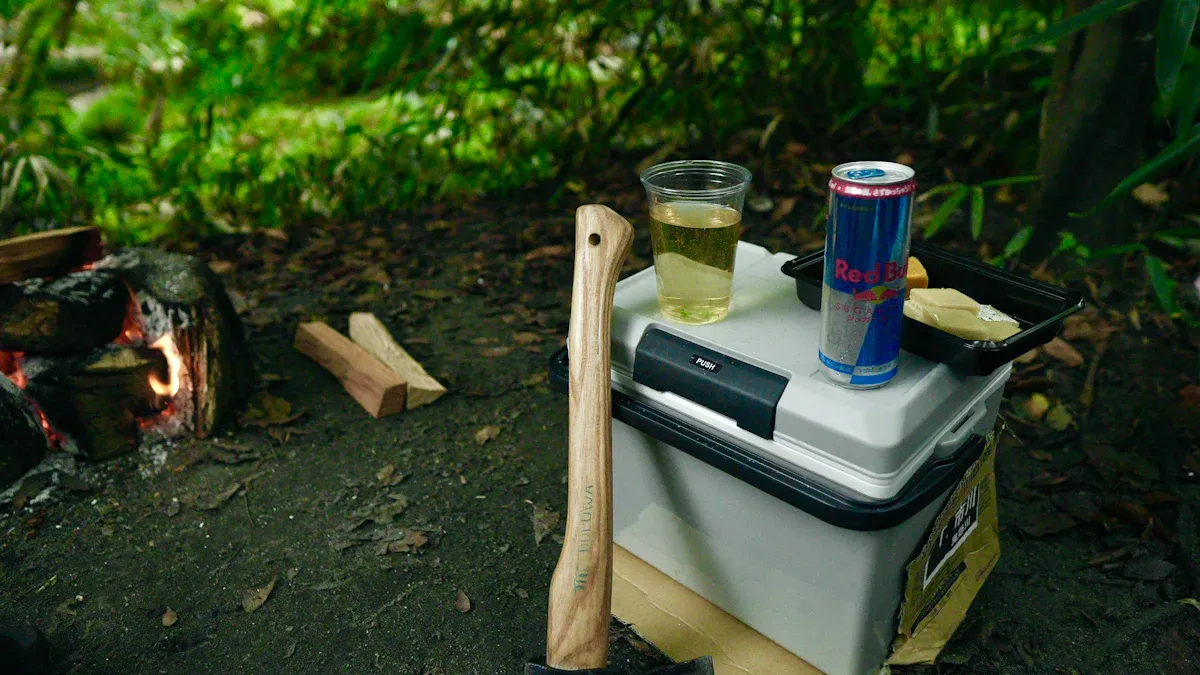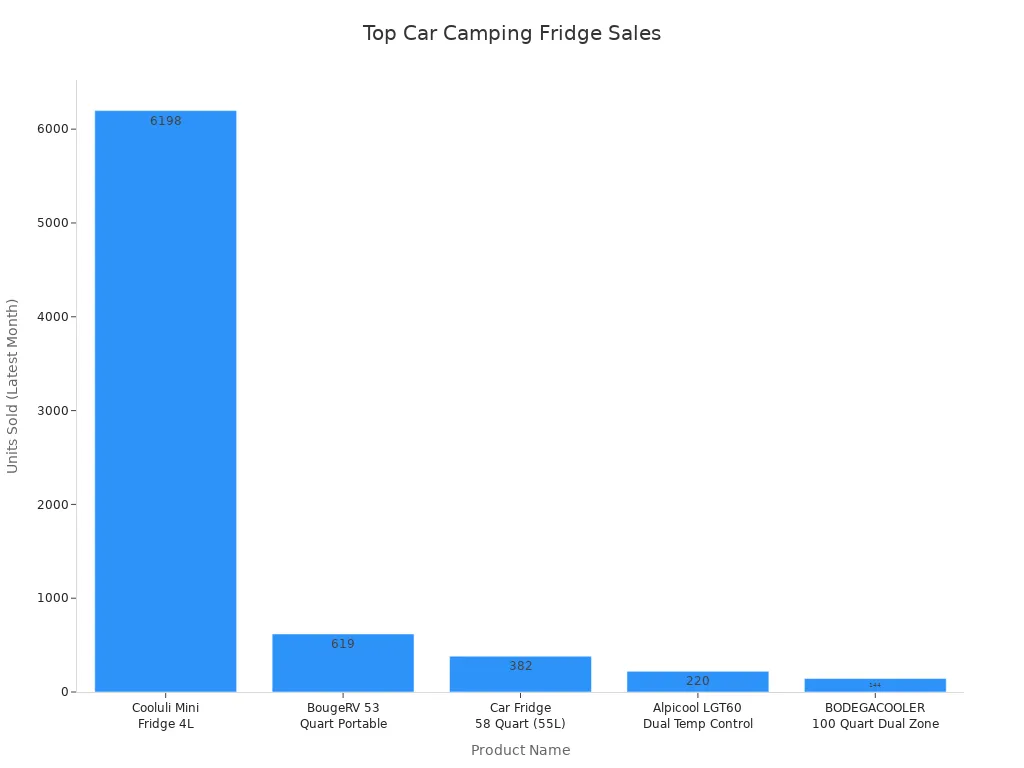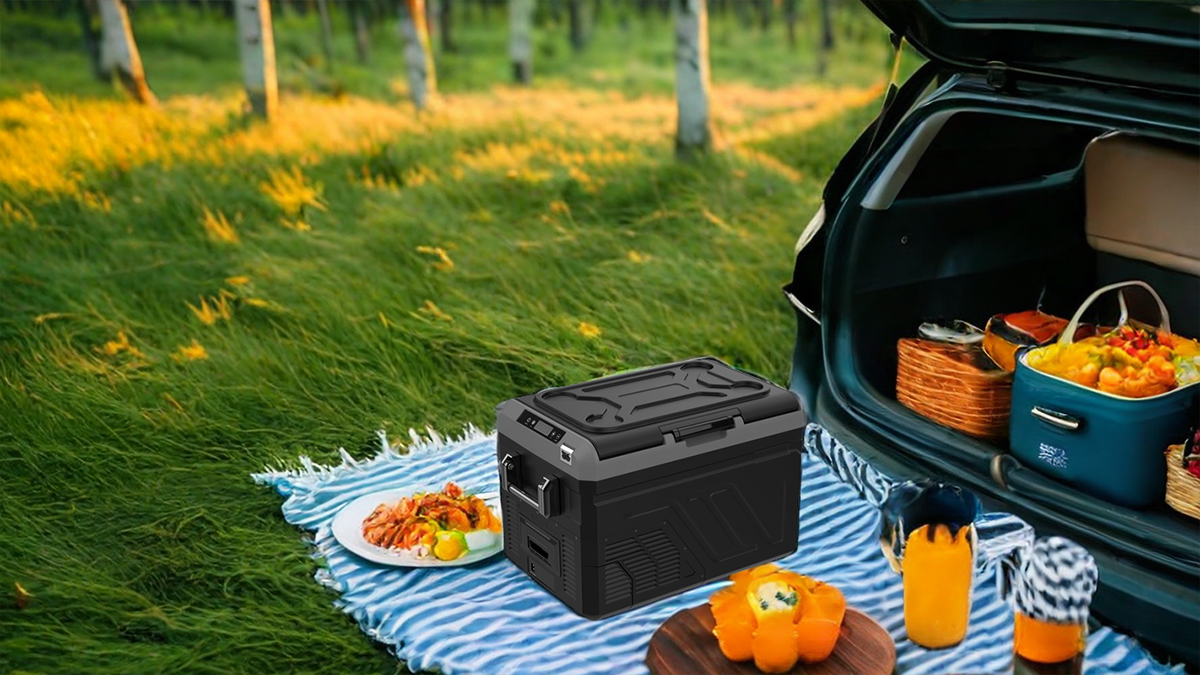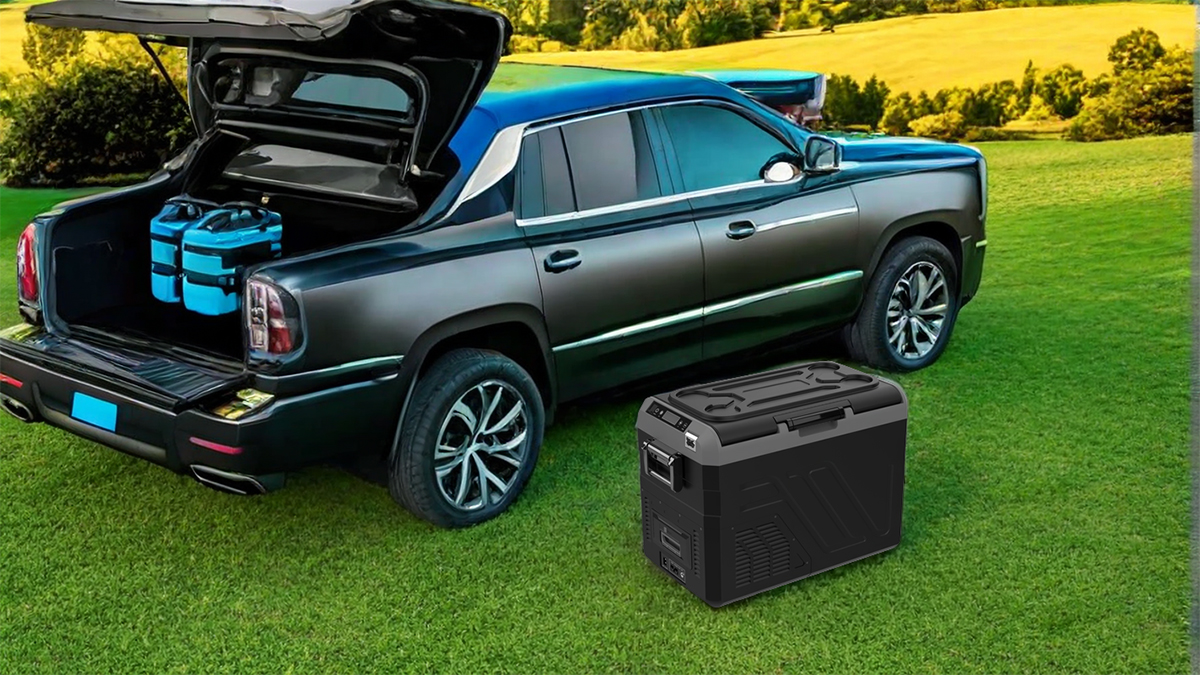Selecting the appropriate home car camping fridge significantly enhances outdoor experiences. Individuals should assess their unique needs and preferences before making a choice. Understanding key features, such as capacity and cooling technology, ensures informed decisions. For example, available options range from 24L to 60L dc fridge refrigerators, catering to various requirements. Additionally, a portable freezer for car use can provide extra storage for perishable items, while a mini car refrigerator is perfect for keeping snacks and drinks cool during road trips.
Size and Capacity
When selecting a camping fridge, size and capacity play crucial roles. The right size depends on the trip length and the number of people involved. For weekend trips lasting 1-3 days, a compact fridge with a capacity of 30-50 liters typically suffices. For moderate trips of 4-7 days, a mid-sized fridge ranging from 50-80 liters is advisable. Longer excursions, lasting 8 days or more, require larger fridges with capacities between 80-125 liters to accommodate ample food and drink supplies.
According to outdoor equipment surveys, medium-sized fridges, usually between 25L and 50L, are the most popular among campers. These fridges strike a balance between capacity and portability, making them ideal for various camping scenarios.
Here’s a quick reference for fridge recommendations based on group size and trip duration:
- For 1-2 people on a 4-7 day trip, a 35 Qt fridge is recommended.
- For 3-5 people on a 2-3 day trip, a 35 Qt fridge is also suitable.
- For 3-5 people on a 4-7 day trip, a 50 Qt fridge is suggested.
- For 5+ people, a 60 Qt fridge is advisable.
Choosing the right size ensures that campers have enough space for their food and drinks while maintaining ease of transport.
| Model Description | Capacity (L) |
|---|---|
| Portable Big Capacity Fridge | 50 |
| 26L Capacity Car Refrigerator | 26 |
| High Quality Plastic Thermal Cooler | 24 |
| Freezer Compressor Refrigerator | 35/55 |
| High Quality Thermo Electronic Cooler | 45 |
Selecting the appropriate home car camping fridge based on size and capacity can significantly enhance the camping experience.
Cooling Technology

Choosing the right cooling technology is essential for maximizing the efficiency of a camping fridge. Various options exist, each with unique features and benefits. Here’s a breakdown of the main types of cooling technology used in camping fridges:
| Type of Cooling Technology | Description | Key Features |
|---|---|---|
| Compressor Cool Boxes | Premium option with advanced technology for cooling. | Works off 12V, mains, or solar; large capacity; app connectivity; durable. |
| Absorption Cooling | Runs on gas, 12V, and mains, ideal for off-grid camping. | Silent operation; reliable; large capacity; versatile. |
| Passive Cool Boxes | No power needed, uses ice or cooler packs. | Lightweight; cost-effective; effective for 24-48 hours. |
| Thermoelectric Cool Boxes | Runs off 12V or mains, suitable for moderate temperatures. | No fumes; lightweight; various sizes available. |
| High-Performance Thermoelectric | Copes with higher ambient temperatures, efficient cooling. | Cools up to 30°C below ambient; intelligent power-saving. |
Compressor cooling stands out for its energy efficiency. It consumes significantly less power compared to thermoelectric cooling, making it a preferred choice for many campers.
| Cooling Method | Energy Efficiency | Power Consumption Comparison |
|---|---|---|
| Compressor Cooling | Significantly more efficient | Consumes up to six times less power |
| Thermoelectric Cooling | Less efficient | Runs continuously, higher consumption |
When camping in extreme temperatures, the choice of cooling technology becomes even more critical. For instance, air conditioning systems may struggle in high heat, leading to inadequate cooling. Therefore, selecting a fridge with robust cooling technology ensures reliable performance, even in challenging conditions.
Investing in a quality home car camping fridge with the right cooling technology can greatly enhance outdoor adventures.
Power Options
Selecting the right power option for a camping fridge is crucial for ensuring reliable performance during outdoor adventures. Campers have several choices when it comes to powering their fridges. Here are the most common power sources:
- Battery Power: This option is widely used, especially from vehicle batteries or portable power stations. It provides flexibility and convenience.
- Solar Energy: A sustainable choice, solar energy can be harnessed with solar panels. This option is ideal for eco-conscious campers.
- Gas (LPG): Efficient for off-grid use, gas powers absorption fridges effectively. This option is particularly useful in remote locations.
- Mains Electricity: Available at powered campsites, this option offers easy access to power for those who prefer traditional electricity sources.
For extended camping trips, campers often consider using portable power stations or deep cycle batteries. Portable power stations can be charged with solar panels, providing a versatile energy source. Deep cycle batteries, available in AGM and Lithium types, are ideal for prolonged off-grid use.
When evaluating how long a camping fridge can run on a standard car battery, several factors come into play. A small portable fridge may operate for a few hours on a standard car battery. For instance, a fridge consuming 40 amperes per hour can run for about 1.5 hours on a 60 Ah battery, assuming the battery is fully charged.
Understanding these power options allows campers to choose the best solution for their specific needs, ensuring that their home car camping fridge operates efficiently throughout their trip.
Specific Use Cases
Camping fridges serve various purposes depending on the type of camping experience. Understanding these specific use cases can help campers choose the right fridge for their needs.
- General Camping: Many users keep their fridges in the back of their vehicles while camping and traveling. This setup offers convenience and safety. Campers primarily use these fridges for storing food and beverages. Battery power is often preferred over generators for its reliability and efficiency.
- RV Camping: Campers using RVs typically prefer larger coolers. The ample space allows for long-term storage and comfort during extended trips. These fridges focus on durability and long-term ice retention, ensuring that food remains fresh throughout the journey.
- Tent Camping: For those who camp in tents, compact and lightweight coolers are essential. Every ounce matters when hiking to remote sites. Tent coolers prioritize portability and versatility, making them suitable for various activities.
- Remote Locations: When camping in remote areas, certain features become critical. Size and capacity are essential for storing enough food and drinks. Power options and efficiency ensure the fridge operates effectively in areas with limited power sources. Additionally, insulation, build quality, and temperature control are vital for maintaining food safety in varying weather conditions.
- Solo vs. Family Camping: The needs of solo campers differ from those of families. Solo campers often require a fridge size of 20–30 quarts for short trips, while families benefit from a larger 40–50 quart fridge for longer excursions.
By considering these specific use cases, campers can select the most suitable home car camping fridge for their adventures.
Home Car Camping Fridge
A home car camping fridge offers significant advantages over traditional coolers. Campers appreciate the convenience and efficiency of these electric coolers. Here are some key differences between home car camping fridges and standard portable fridges:
| Feature | Traditional Cooler | Portable Refrigerator (Electric Cooler) |
|---|---|---|
| Initial Cost | Low ($20 – $400) | High ($300 – $1,500+) |
| Ongoing Cost | High (Constant need for ice) | Low (Cost of electricity/power source) |
| Performance | Dependent on insulation material & ambient temp. | Consistent, precise temperature control. Can freeze. |
| Convenience | Low (Requires ice management, draining) | High (Plug-and-play, no ice, no mess) |
| Food Safety | Fair to Poor (Risk of temps above 40°F) | Excellent (Stable temperature) |
| Usable Space | Low (Ice takes up 30-50% of space) | High (100% of internal volume is usable) |
| Portability | Lighter when empty | Heavier, even when empty |
| Power Needs | None | Requires a 12V or 110V AC power source |
| Durability | Good to Excellent (Rotomolded models are very tough) | Good to Excellent (Built for long-term travel) |
The benefits of a home car camping fridge include:
- Ice-Free Convenience: No more buying ice, draining water, or soggy food.
- Consistent Temperature Control: Set the exact temperature desired.
- Enhanced Food Preservation: Keep food fresh for longer trips.
- Versatility: Many models can function as both fridge and freezer.
- Space Optimization: No ice means more usable storage space.
- Reliability: Maintains cold temperatures even in hot conditions.
Modern 12V electric coolers are designed for energy efficiency, consuming between 30 and 60 watts per hour. Features like eco-mode help reduce energy consumption, making them ideal for long trips. These coolers perform particularly well during extended camping stays due to their low energy usage.

Choosing a home car camping fridge can significantly enhance the camping experience. With their advanced features and reliable performance, these fridges provide campers with the convenience they need for enjoyable outdoor adventures.
Choosing the right camping fridge involves careful consideration of size, cooling technology, power options, and specific use cases. Campers should evaluate their habits and preferences to find the best fit.
- Families on long trips may need larger fridges.
- Solo campers often prefer smaller, portable options.
- Efficient cooling technology impacts energy consumption and maintenance.
Making an informed choice leads to a more enjoyable camping experience.
| Feature | Benefit |
|---|---|
| Durability | A durable camping fridge can last between 10 to 25 years, providing long-term value for frequent campers. |
| Energy Efficiency | Energy-efficient fridges allow for longer trips without draining power, enhancing the camping experience. |
| Temperature Control | Ensures food remains fresh and safe, improving the overall outdoor experience. |
| Ample Storage Capacity | Provides necessary supplies for adventures, enhancing convenience and enjoyment. |
Investing in the right fridge ensures campers enjoy their outdoor adventures to the fullest.
FAQ
What is the best size for a camping fridge?
The best size depends on trip duration and group size. Generally, 30-50 liters suits short trips, while 50-80 liters works for longer excursions.
How long can a camping fridge run on a car battery?
A small fridge may run for 1.5 hours on a 60 Ah battery, depending on its power consumption and battery charge.
Can I use a camping fridge while off-grid?
Yes, many camping fridges operate on battery power, solar energy, or gas, making them suitable for off-grid camping experiences.
Post time: Sep-24-2025



